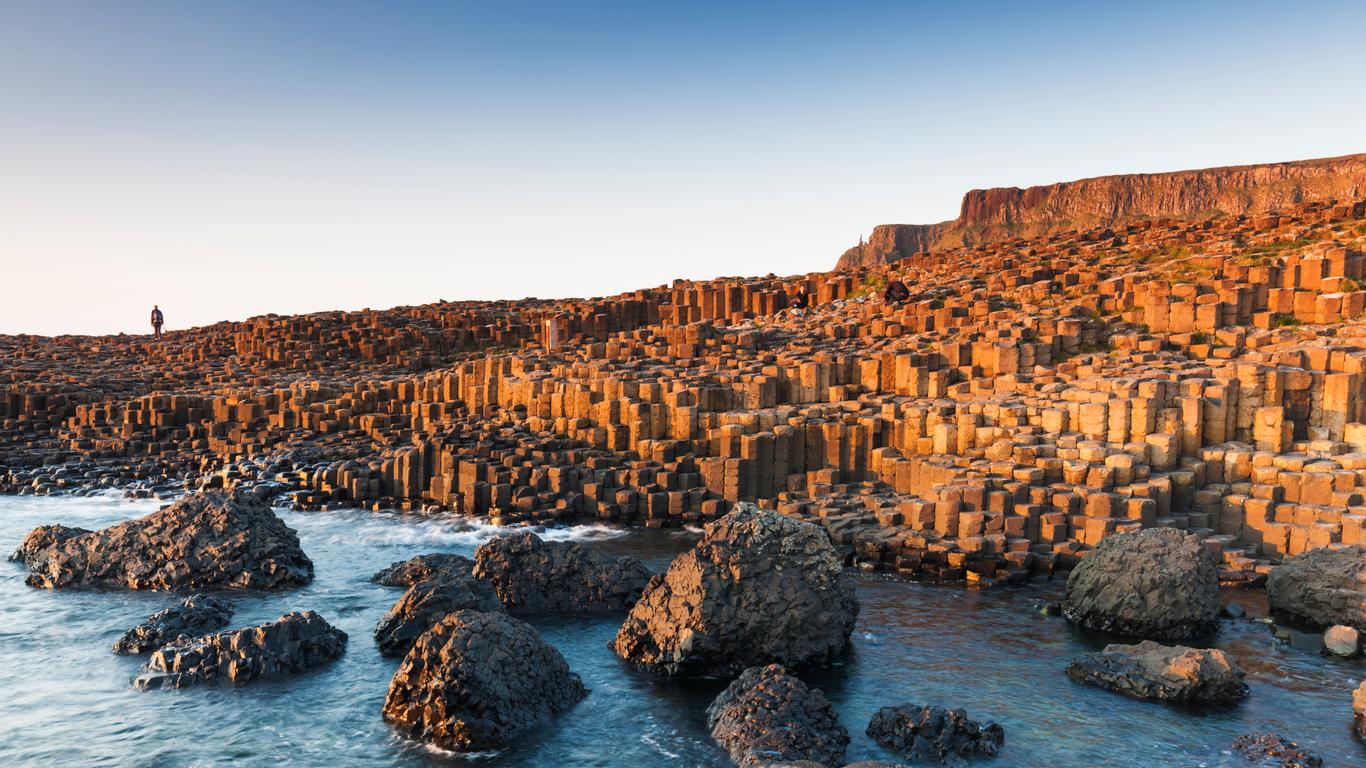As one of the most iconic natural features of Ireland, the Giant’s Causeway is a popular tourist attraction in the north of the country, defined by the basalt columns that make up the rock formation of the area. Less than five kilometres from the nearest town of Bushmills, this geographical magnificence is a world heritage site, national nature reserve, and a natural wonder of the United Kingdom. In the County Antrim, the Giant’s Causeway is the result of a volcanic eruption in ancient times and remains today as a series of interlocking rock columns, which act as stepping stones from the foot of rugged coastal cliffs.
Although the Giant’s Causeway is a complete attraction in itself, there are smaller rock formations and features that visitors can witness, for example, The Giant’s Boot is a weathered piece of rock that looks like the object of a large show. Geologists call some particularly reddish and low columns Giants Eyes and other tall, thin columns, The Chimney Stacks, both of which visitors can see when exploring the area. In addition to geological features, visitors can watch the local seabirds of the area, including redshanks, razorbills and fulmars, as well as a selection of unique plant life, like sea spleenwort and frog orchid. For detailed information on the history of the geology of the Giant’s Causeway, visitors can use the visitors centre, which provides expert advice and suggestions, and reveals the local legends and stories surrounding the unique rock formation.
Visitors can reach the Giant’s Causeway by train along the Belfast-Derry railway line and can get to the nearest train station in Coleraine by taking a local bus service. There is also a direct road that drivers can take only a few kilometres from the nearest local town, or visitors can walk along the stunning coastal path for the full experience of the beautiful area.
The history of the Giant’s Causeway dates back 60 million years, to the time of the Paleocene Epoch, when the north of Ireland experienced volcanic activity and flowing lava cooled and contracted, forming the current geology. Drying cracks formed in a downwards pattern, creating pillar-like structures, the height of which depend upon how long it took for the lava to cool. Legends developed claiming that the formation was the causeway of a giant, who wanted to build a link between Ireland and Scotland.





